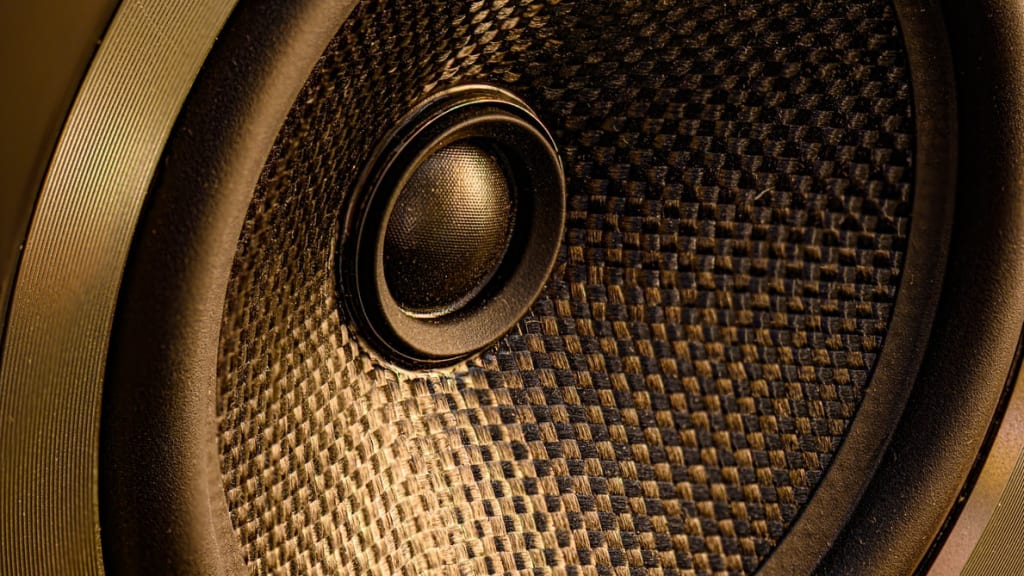How to Wire Speakers Together
So the question is How to wire speakers together; today, I will give you a complete guide on this article & trying my best to solve your query.

How to Wire Speakers Together. Get a full sound from your system through the combination of several speakers. There are a variety of ways of doing this. Follow the instructions below to work together with your speakers.
Step 1:
Determine the optimum output and amplifier for your speakers. Ohms are measured in stereo output. This knowledge can be found at the back of your speakers and amplifier. Confirm that the performance of your speaker does not surpass that of your amplifier.
Step 2:
Switch off and unplug your amplifier.
Step 3:
Determine which of the three wiring processes for your amplifier you would use. Three simple wiring modes are available: series, parallel, and a combination of the two. Series needs the most ohms; the least is required in parallel. By mixing series and parallel, more speakers with fewer ohms can be hooked up since it holds the load steady.
Step 4:
Use series mode to connect. Link your positive (red) connection to the positive input of a single speaker from your amplifier. Then attach the negative (not red) connection to your first speaker's positive connection on the next speaker. Repeat this connection until you have linked all your speakers. Then add the negative to the negative on your last speaker.
Step 5:
You are using the parallel mode to connect. Link your amplifier's positive relation to the positive connection on your speakers. To connect multiple speakers in a parallel way, you need split cabling. Next, connect the split wires to all your speakers and connect your cable's single end into your amplifier's negative jack.
Step 6:
Link by merging the two links. Attach two speakers in series mode to connect the second pair of speakers with the split cable. Connect all of the speakers and connect the end of your cable to your amplifier's negative jack.
How to wire Four Speakers to One Amplifier
Let's look at the different ways to connect at least four pairs of speakers to one HiFi amplifier. If only two pairs of speakers are linked to a stereo amplifier (that is, two speakers to 1 amp)
Four speakers wired in series
Again, the way four speakers are wired (although it will work) is not recommended, nor is it convenient. Besides the hassle of wired from one speaker to another, all speakers stop working when one wire is disconnected.
Each speaker also affects the total load of the Amplifier, allowing it to work up to one-eighth of its capacity. It is closer to the daisy chain since every speaker is part of a daisy chain.
Four speakers wired in Series-Parallel
It is a safe way to cable four speakers (without a switch box or separate volume controls). It's a series and parallel mix. It works provided that all speakers are 8 ohms since the total impedance is 8 ohms,
While this works theoretically, it's often not practical, since you need several wires to link the speakers and no control of anyone speaker – all of them are operated simultaneously by the amplifier volume control.
You don't want to do that if you wish to music in one place and not everywhere simultaneously - neighbours don't necessarily want to listen to the same theme as you do (through the outside speakers).
Speaker Selector with Volume Controls
It allows the volume to be regulated in each zone (with a pair of speakers) at the central location.
Some volume control units often fit impedance. This means that they have a switch (usually on the back panel but sometimes inside), which allows you to tell you that 2, 4 or 8 speakers are connected to the Amplifier.
You don't have to worry about overloading the Amplifier once this switch has been set. Some units have no control, but four speakers are mounted.
Impedance fits when the Amplifier is just one speaker, and the signal splits equally between all four speakers. Every speaker receives only 1/4 of the sound that comes from the Amplifier (assuming you selected x4 on the switch).
Some units of the volume control (read cheaper) have no matching impedance. These units possibly do not need to operate all four sets of speakers simultaneously.
Although this is not as safe as using impedance matching, some installations might be suitable. If you want low-level music in the workshop and family space, it's okay.
If you have a party and you want noisy music outside, make sure that the workshop and lounge are shut down – that decreases the overall load so that you connect one or two speakers to the Amplifier.
FAQS (How to Wire Speakers Together)
Can you wire multiple speakers to one output?
There are only two ways to link two speakers in parallel or series to one amplifier. If every speaker has an impedance of eight ohms or more, you can generally connect it in parallel.
How do I connect multiple speakers?
The simplest and most reliable way to connect two powerful speakers to the main output. One to the left and one to the right mixer output, then the other two speakers to the daisy chain. A second approach is to connect two speakers to the Main Out and two more, often called Community OUT, to the SUB OUT channel.
Is it better to wire speakers in series or parallel?
Series: If you wire (hook-up) serial speakers, the speaker resistance (as calculated in ohms) is additive, i.e., the series of two 8 ohms results in a 16-ohm load. Parallel - The resistance of the speakers decreases when wiring in parallel.
Are speakers louder in series or parallel?
Two speakers in series sound a little louder than a single speaker, but not too much for the same amplifier. Although the total power is halved on paper, the ear does not sound linear to level changes and can sound 'nearly as loud,' not 'half as loud.'
What hits harder 2ohm or 4ohm?
A subwoofer with lower resistance to electricity creates a louder sound than one with a high resistance, which means 2ohm subwoofers are louder than 4ohm ones. Although louder, 2-ohm subwoofers often produce a more inferior sound quality due to their energy consumption.
Conclusion
I hope you have understood how and how to wire four (or more) pairs of HiFi speakers around your home. The video in the article Speaker Impedance understanding describes how each of the various forms of speaker selector switches offers protection against impedance or impedances.
My Speaker Selector Switch Simulator also offers an immersive way to see how impedance and power-sharing are done. See my article How to attach two speakers to 1 amplifier for a practical discussion about wipe only two speakers to an amplifier (4 speakers to a stereo amp).
See the article on Distributed Speaker Systems with more than four speakers, particularly in a commercial installation.
Note that changing an amplifier's total load impedance improves or decreases the Amplifier's power output. For more details, see the Multiple Speakers Adjust Amplifier Power. Due to its sensitivity, different speakers can sound louder or softer than others – see Speaker Sensitivity understand.
Each speaker will have different levels of power if the speakers have a different impedance. See How multiple speakers share power for more info, before sending your question, please read the FAQs.
About the Creator
Sophia Mia
Hey, friend! I’m Sophia, and I am a digital marketing expert. I’m so happy to see you! I appreciate your attention on my profile.






Comments
There are no comments for this story
Be the first to respond and start the conversation.